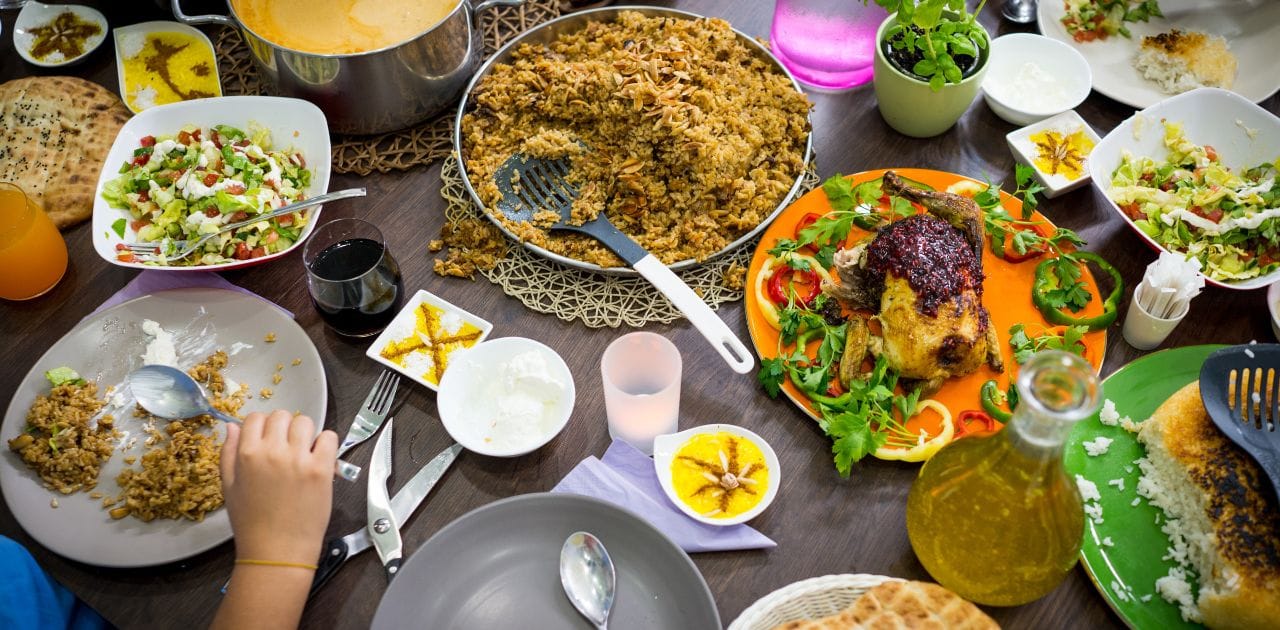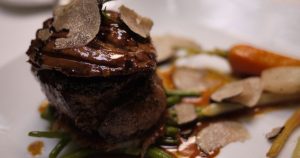Dubai may be known for its futuristic skyline and luxury shopping malls, but let’s be honest, what really sticks with most people after a visit is the food. Not just any food, but the kind that’s been passed down through generations, full of spices, stories, and a little bit of soul. We’re talking about traditional food in Dubai, the stuff you don’t always see on hotel buffets but should definitely hunt down.
So, what exactly makes Emirati food special? It’s got deep roots in Bedouin culture, which means lots of slow-cooked meats, rice, dates, and spices. But because Dubai was always a port city, there are flavors borrowed from Persia, India, East Africa, you name it. It’s like a cultural food mashup, and it works beautifully.
Now, get this, a 2023 report by Dubai Tourism showed that over 78% of tourists listed trying local cuisine as one of their top experiences during their visit. That means more people are digging into luqaimat and harees than ever before. Not surprising, right? Who wouldn’t want to try dishes that are seasoned with history?
The Roots of Emirati Cuisine
Before all the glitz and Michelin-star chefs came to town, Dubai’s food culture was built around the desert, the sea, and trade. Life in the old days was tough, hot climate, limited resources, so food had to be filling, simple, and preservable. That’s why traditional dishes are usually slow-cooked, rich in spices, and full of grains and proteins. Think wheat, dates, rice, meat, and fish, mostly stuff that could be traded or grown in the harsh climate.
Spices? Oh, they’re everywhere. Saffron, turmeric, cinnamon, and dried lime (called loomi) are key players. And meals were often served family-style—on one big plate, everyone sitting on the floor, scooping with their hands or flatbread. Kind of cozy, right?
And here’s something cool, UNESCO added Emirati coffee and date hospitality to its list of Intangible Cultural Heritage. It’s more than just sipping Arabic coffee; it’s about welcoming guests with open arms. That spirit still shows up in how food is served today.
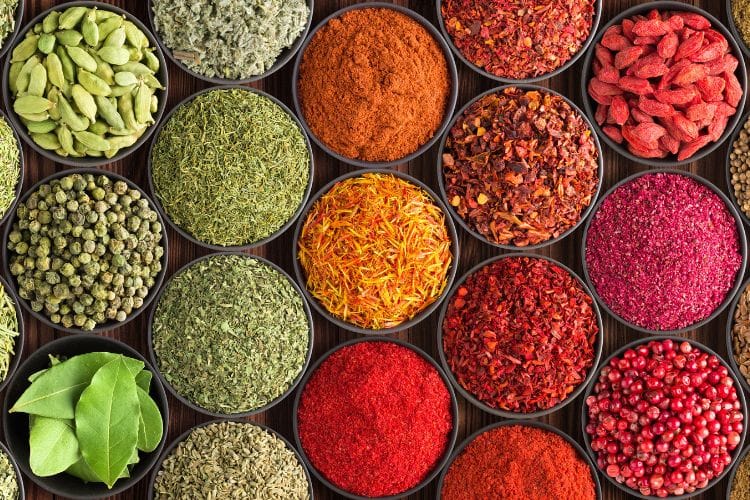
Must-Try Traditional Food in Dubai
Curious about what to actually eat? Let’s break it down. These are the dishes you’ve got to try when you’re in town.
Al Harees
Al Harees is as traditional as it gets. It’s made by cooking cracked wheat and meat (usually chicken or lamb) in a clay pot for hours, seriously, like overnight slow-cooking. The result? A super soft, porridge-like dish that’s surprisingly rich, even though it only uses a few ingredients.
Locals love it during Ramadan because it’s filling but easy to digest after fasting all day. You won’t believe this, but it used to be made in underground ovens!
If you’re ever invited to an Emirati home during Eid, chances are this will be on the table.
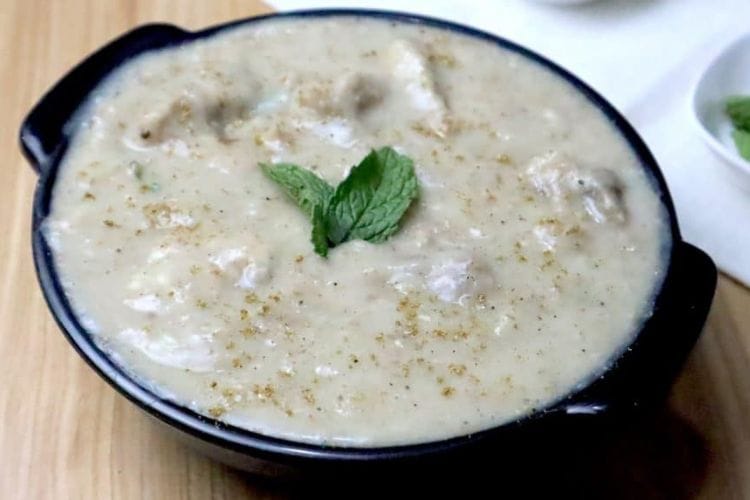
Al Machboos
Think of this as the UAE’s answer to biryani, but with its own twist. Al Machboos is made with rice, meat, and a fragrant mix of spices including cinnamon, cloves, cardamom, and dried lemon (loomi).
What makes it different from other rice dishes is that tangy, smoky flavor from the loomi. It’s usually cooked all in one pot, so all those flavors really come together.
According to the Dubai Food Festival, Al Machboos is among the top 5 most-ordered traditional dishes in heritage restaurants across the UAE. That says a lot, right?
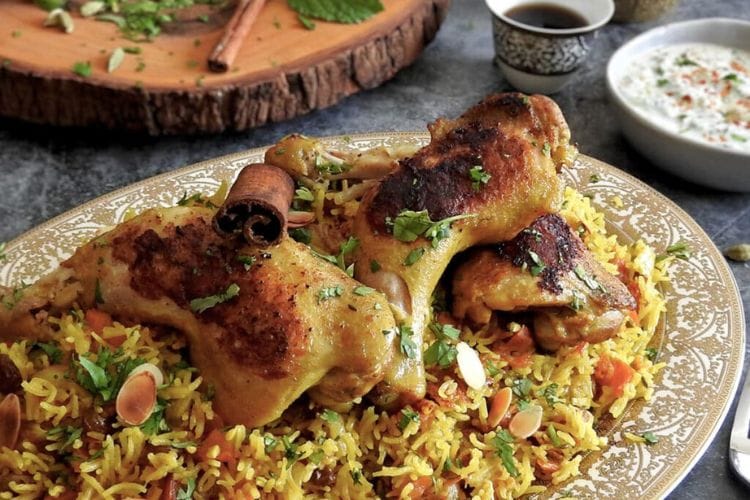
Thareed
Thareed is a total comfort food. Imagine a slow-cooked stew of meat and veggies, usually carrots, potatoes, and zucchini, served over thin Emirati bread that soaks up all that goodness. It’s kind of like lasagna, but with flatbread and meat stew instead of pasta and cheese.
Some people even call it the Emirati version of a casserole. The best part? You can eat it with your hands. It’s messy in the best way.
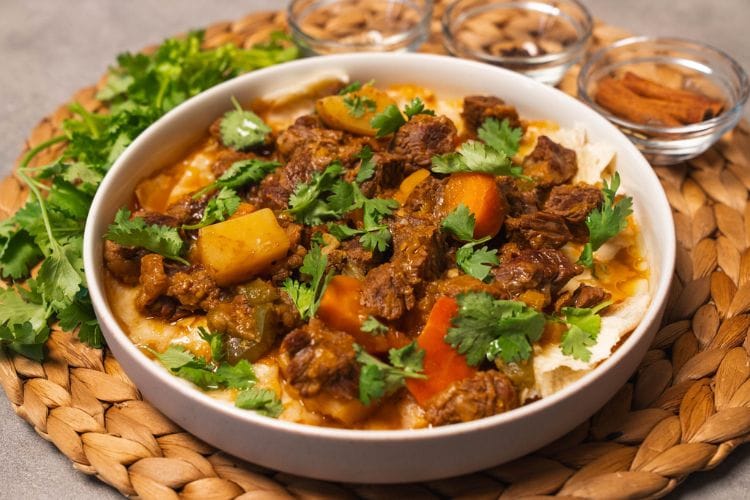
Al Madrooba
Okay, this one might not be for everyone, but if you’re into bold flavors, you’ve got to try Al Madrooba. It’s made with salted fish, turmeric, garlic, and a thick sauce that’s whipped up using flour and water until it forms a paste.
It’s usually served with rice and is especially popular in coastal areas like Dubai and Abu Dhabi.
You might be thinking: Salted fish? Really? But here’s the thing, this dish goes back centuries, when preserving fish with salt was the only way to keep it edible in the desert heat.
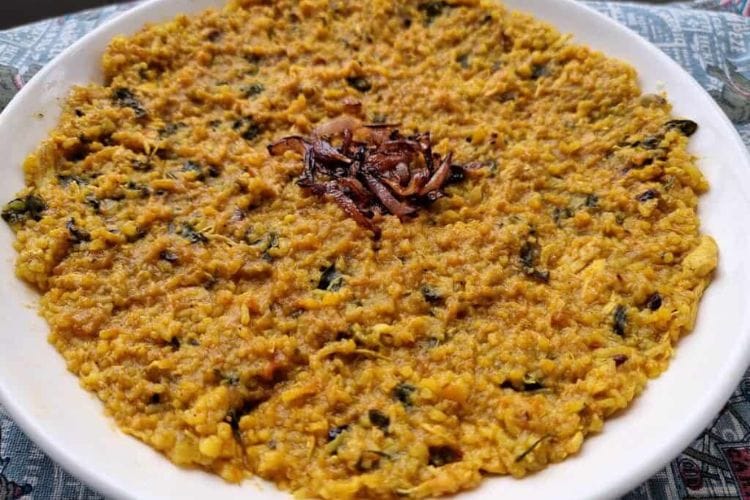
Balaleet
Sweet noodles for breakfast? Yep, and it’s actually really good.
Balaleet is made with vermicelli noodles sweetened with sugar, cardamom, and saffron, topped with a layer of scrambled eggs. That mix of sugary and savory flavors might sound weird, but somehow it just works.
You’ll often find this at breakfast buffets in traditional hotels or during Eid breakfasts in Emirati homes.
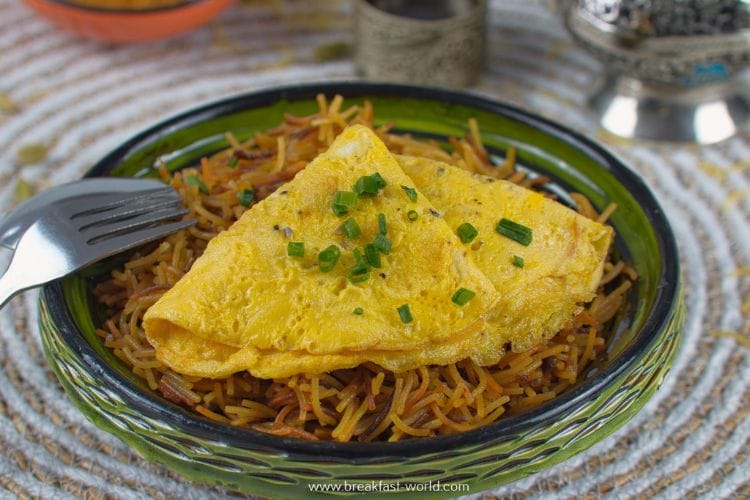
Khuzi (Ghuzi)
Here’s what you need to know about Khuzi: It’s the showstopper. If you walk into an Emirati wedding, Eid celebration, or big family gathering, there’s a good chance Khuzi will be front and center.
This dish is basically a whole roasted lamb or goat served over a huge tray of fragrant rice, with nuts, raisins, and sometimes boiled eggs on top. Sounds intense, right? It is, but in the best way.
It’s meant to be shared, and it’s usually eaten by hand while sitting on the floor, which makes it feel even more special. Some modern places serve a mini version of Khuzi with just a lamb shank, but nothing beats the real deal.
Did you know? The lamb consumption per capita in the UAE is around 9.4 kg/year. That’s higher than many Western countries, no surprise when dishes like this are on the menu.
For more information check:
https://www.oecd.org/en/publications/2025/07/oecd-fao-agricultural-outlook-2025-2034_3eb15914/full-report/meat_5462e384.html
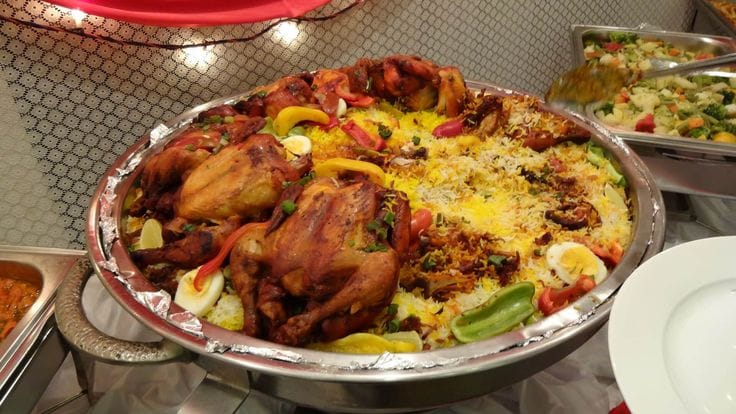
Luqaimat
If you only try one dessert in Dubai, make it this. Luqaimat (pronounced loo-gay-mat) are little golden balls of deep-fried dough, crisp on the outside, soft on the inside, and drizzled with date syrup or honey. Some places sprinkle sesame seeds on top for extra texture.
They’re kind of like doughnut holes, but lighter and with that signature Middle Eastern sweetness. You’ll see them everywhere during Ramadan, at homes, markets, and even roadside stalls.
Quick tip: They taste best when eaten warm. Grab a few with gahwa (Arabic coffee) and you’re golden.
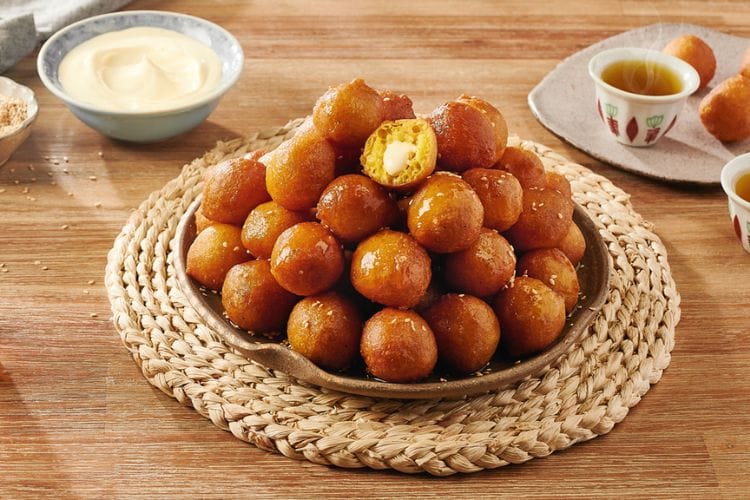
Samboosa
Now here’s a name you might recognize, Samboosa. Yep, it’s the Emirati cousin of the samosa. Introduced through trade and Indian influence, it’s been fully embraced into UAE food culture, especially during Ramadan.
You’ll find them filled with spiced minced meat, vegetables, cheese, or even lentils. Crispy, flaky, and often fried just before sunset during Ramadan, they’re the go-to starter for iftar.
It’s a must-have on the table, kind of like the UAE’s version of spring rolls during Chinese New Year.
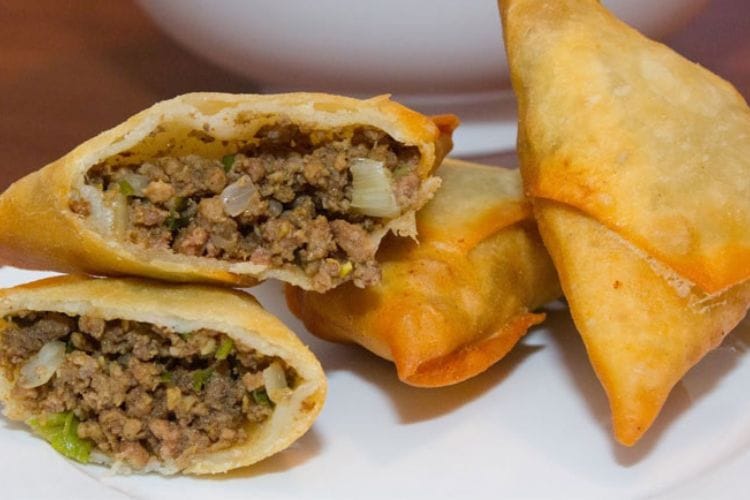
Shorbat Adas
Simple, warm, and comforting, Shorbat Adas is lentil soup, but with a distinctly Emirati touch. Made with red lentils, cumin, garlic, and lemon, it’s usually one of the first dishes served at iftar or as a light starter before a heavier main meal.
This soup is packed with protein and super easy to digest. You’ll find it at home, in cafes, and in five-star hotel iftars.
Lentils are considered one of the oldest crops in the region, they’ve been eaten in the Middle East for over 8,000 years.
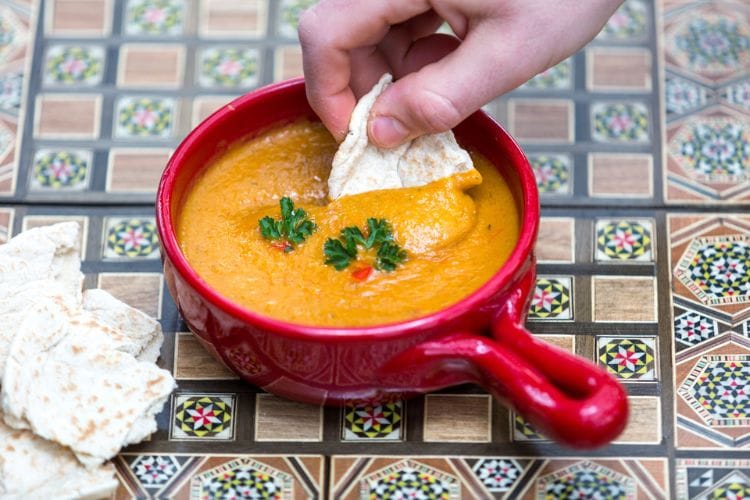
Regag & Khameer
Let’s talk bread. Because no traditional Emirati meal is complete without it.
Regag is thin, crispy bread, kind of like a crepe or dosa, usually topped with things like cheese, eggs, or fish sauce called mehyawah. It’s street food but also very nostalgic, especially for older generations.
Khameer, on the other hand, is soft, puffy, and slightly sweet. It’s baked with saffron and cardamom and sometimes filled with dates. People love having it with tea or for breakfast.
Walk into any Emirati home on a weekend morning, and the smell of fresh khameer is enough to make you hungry, even if you weren’t before!
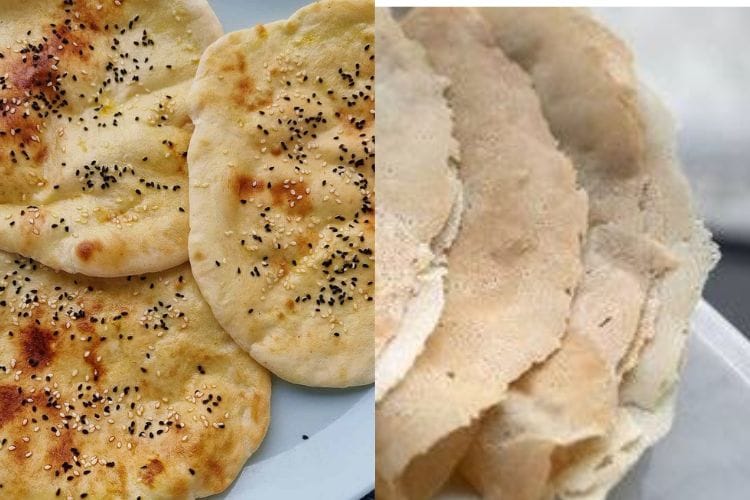
Jisheed
Wait, shark?! Yep, you read that right. Jisheed is made by boiling and mincing shark meat, then mixing it with spices like turmeric, garlic, and black lime. It’s usually served over rice and is especially popular in coastal Emirati towns.
Don’t worry, it doesn’t taste fishy. The prep process removes most of the strong smell, and the spices make it aromatic and rich.
Fishing is still a major part of the UAE’s culture, especially in towns like Fujairah and Ras Al Khaimah. Shark dishes like this have been part of local diets for centuries.

Stuffed Camel
Okay, this one’s rare, and kind of wild. Stuffed camel is a traditional Bedouin dish served only during the grandest of occasions. We’re talking weddings or royal events.
The recipe is exactly what it sounds like: a whole camel stuffed with lamb, which is stuffed with chickens, which are stuffed with rice and eggs. It’s like the ultimate food nesting doll!
While you won’t find this on restaurant menus (for obvious reasons), it’s a cultural symbol of generosity and hospitality. Some desert safari experiences might mention it as part of storytelling or folklore. This dish was even listed in the Guinness Book of World Records as the largest item on any menu!
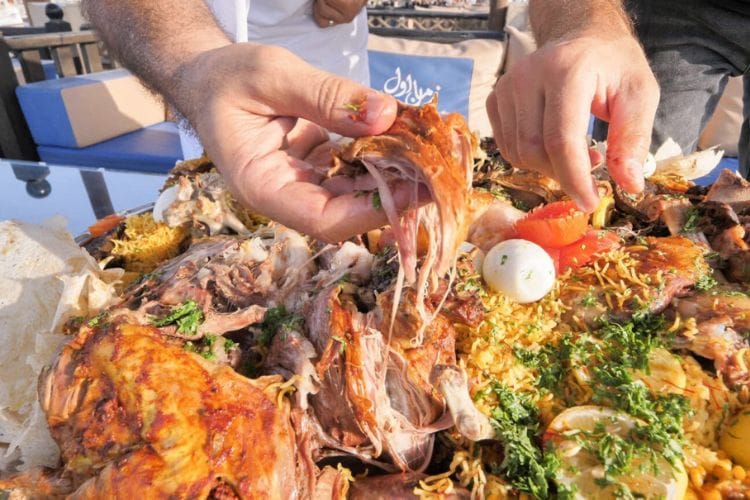
Tips for Finding the Best Food
- Skip the touristy spots: Look for places like Al Fanar, Al Khayma Heritage, or Logma that focus on traditional recipes and local presentation.
- Try traditional breakfasts: Dishes like Balaleet, Khameer with cheese, and Karak tea are perfect if you want to ease into the cuisine.
- Book a food tour: Guided tours in areas like Old Dubai or Al Fahidi let you taste multiple dishes and learn the stories behind them. Try Frying Pan Adventures or similar local tour companies.
- Ask locals where they eat: Whether it’s a cab driver or a store owner, locals love sharing their favorite food spots—and those recommendations are often gold.
- Visit Ramadan tents (if it’s the season): During Ramadan, many hotels and venues set up traditional tents with full iftar buffets. It’s the perfect time to try dishes like Harees, Machboos, and Luqaimat in one go.
- Join a desert safari dinner: These usually include a buffet of Emirati food served under the stars, complete with live music, henna, and fire shows. A fun way to mix adventure and culture!
Final Words
So, there you have it, Dubai’s traditional food scene is way more than just shawarmas and hummus. From the rich spices in Mandi to the sweet perfection of Luqaimat, there’s something for every kind of foodie. Exploring these dishes is like tasting bits of Emirati history, each plate tells a story. Whether you’re walking through a local market or dining in an old-style courtyard, every bite gives you a flavor of Dubai’s roots.
Hungry yet? Next time you’re in the city, skip the fast food and try something local. Trust us, your tastebuds will thank you!

